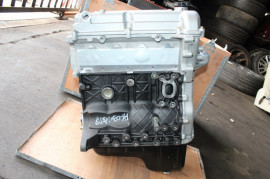Cost Effective Opel Corsa Engine Options for Your Spending plan
Exploring the Inner Operation of a Compact Car's Engine System
As drivers, we usually consider given the intricate procedures that happen within the confines of our lorry's engine system. The small yet complex equipment that moves us forward is a wonder of engineering accuracy and control. From the controlled surges in the combustion chamber to the thorough timing of fuel injection, every component plays a crucial role in the smooth operation of the engine. In this expedition of a small lorry's engine system, we will untangle the internal workings of this mechanical harmony, clarifying the enigmas that drive us forward on our everyday journeys.
Burning Process Review
The combustion process in a portable vehicle's engine system is an essential mechanism that effectively transforms gas into energy to power the automobile. This procedure occurs within the combustion chamber of the engine, where fuel and air mix, spark, and generate regulated surges. The burning process consists of four primary phases: consumption, exhaust, compression, and power.
During the consumption stage, the piston relocates downward, attracting a mix of air and gas into the combustion chamber. The following phase, compression, entails the piston moving upwards, compressing the air-fuel combination to enhance its potency. Consequently, in the power phase, the ignition system sparks the pressed mix, causing a rapid growth of gases that compels the piston back down. This down activity generates the power required to drive the lorry. In the exhaust phase, the scorched gases are removed from the burning chamber through the exhaust shutoff, preparing the chamber for the following cycle. This cyclic combustion process is basic to the procedure of a compact car's engine system, making certain efficient energy conversion for propulsion.
Piston and Cyndrical Tube Communication

The piston's specific fit within the cyndrical tube is crucial for keeping optimal compression and avoiding power loss throughout burning. Limited clearances between the piston and cylinder walls ensure effective securing, enabling the piston to move smoothly without allowing gases to leakage past. Proper lubrication is also vital to lower rubbing and use between these elements, enhancing useful link longevity and efficiency.
Moreover, the style and products made use of in producing the piston and cylinder impact engine performance and durability. Modern engines often use light-weight yet resilient materials like light weight aluminum alloys for pistons and cyndrical tube liners to reduce inertia and boost thermal effectiveness. In general, the unified communication between the piston and cyndrical tube is basic to the engine's capability and general performance.
Gas Injection System Functionality
Gas injection systems in small car engines play an essential function in precisely supplying fuel to the burning chamber for regulated and efficient ignition. The gas shot system functions by infusing fuel right into the combustion chamber at the ideal moment during the engine's procedure (opel corsa engine). This precise timing makes certain that the fuel blends uniformly with the air for proper combustion, leading to enhanced gas effectiveness and reduced discharges
There are largely two kinds of fuel injection systems made use of in compact automobile engines: port fuel injection (PFI) and straight fuel injection (DFI) PFI systems infuse fuel right into the consumption port before the consumption shutoff, while DFI systems inject gas straight into the combustion chamber. Both systems have their benefits, with DFI offering much better gas atomization and PFI offering an extra cost-effective option.
Recognizing Engine Cooling Systems
Reliable procedure of a small vehicle's engine relies greatly on the efficiency of its cooling systems. The cooling system in a portable automobile commonly is composed of numerous elements working with each other to control the engine temperature. Understanding these engine air conditioning mechanisms is vital for keeping the go to this web-site performance and durability of a portable automobile's engine system.

Exhaust System Parts Explained
The ideal functioning of a portable vehicle's engine air conditioning mechanisms depends on a corresponding system recognized as the exhaust system, which makes up various necessary components for making certain efficient emissions and engine efficiency. The exhaust manifold accumulates exhaust gases from the engine's paths and cylinders them to the catalytic converter.
One vital component of the exhaust system is the oxygen sensor, which checks the oxygen levels in the exhaust gases to assist manage fuel usage and ensure ideal engine efficiency. opel corsa engine. Additionally, the resonator might be existing in some exhaust systems to decrease noise degrees. In general, the exhaust system plays a vital role in keeping engine performance, minimizing harmful discharges, and making certain a quieter driving experience for compact vehicle owners

Final Thought
Finally, the portable vehicle's engine system is a complicated mix of components that work together to click here for more info assist in the burning procedure, convert fuel into power, and remove waste gases. Comprehending the internal operations of the engine system, consisting of the piston and cylinder interaction, fuel injection system, engine cooling systems, and exhaust system elements, is vital for keeping optimum efficiency and performance of the vehicle.
The combustion process in a compact car's engine system is an important device that efficiently transforms fuel into power to power the car.Fuel injection systems in small automobile engines play a crucial role in precisely delivering gas to the burning chamber for controlled and efficient ignition.There are primarily two types of gas injection systems used in compact vehicle engines: port fuel injection (PFI) and straight gas shot (DFI) Recognizing these engine air conditioning devices is essential for keeping the efficiency and durability of a portable automobile's engine system.
The ideal performance of a small car's engine cooling mechanisms depends on a corresponding system recognized as the exhaust system, which consists of different necessary elements for making sure effective emissions and engine efficiency.